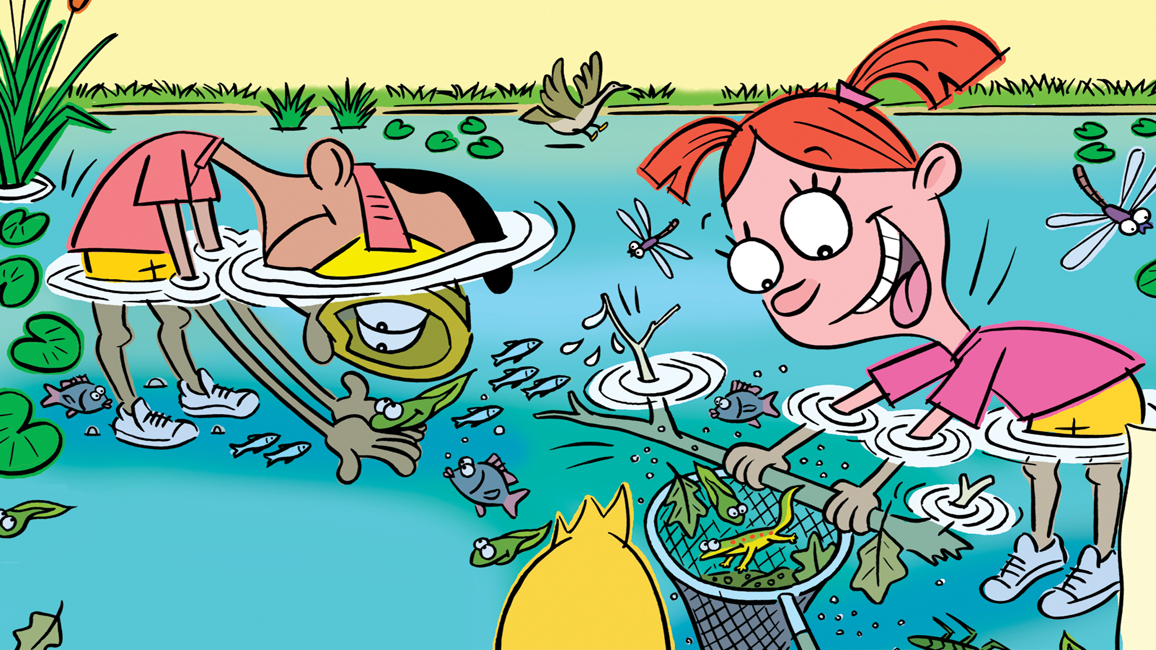
Activities by Luise Woelflein; Art by Jack Desrocher
A pond is a busy place in summer. Put on your rubber boots and march the family down to the edge of a pond, lake, stream, or river and see for yourselves!
What You Need
- strainer or dip net
- small white plastic containers
- white plastic ice-cube tray or plastic egg carton
- plastic eyedropper
- small paintbrush
- hand lens or magnifying glass
- pond life guide book
What You Do
- Scope it out. Approach the pond slowly so you don’t scare away creatures near the water. How many creatures can you find? What are they doing? Are any creatures flying over the water? Wading? Skittering across the surface? Swimming in the water or moving along the bottom? Search plant stems and look under rocks and logs near the water’s edge.
- Scoop ’em up. Fill the pan and containers with water and set them in a shady spot. Next, use your net or strainer to catch small fish, insects, and other tiny creatures. Try these super scooper tips:
- Scoop and skim in different places (at the surface, along the shore, across the bottom). Check for wiggly creatures in the muck as the water runs out.
- Hold the net just under the surface. Have a child hold a rock or branch in, or right over, the net and gently swish off any clinging creatures into the net.
- Sort ’em out. Empty whatever you find into the containers. Then fill an ice-cube tray or plastic egg carton with clear water. Next, transfer the creatures from the collecting containers to the tray. An eyedropper or paintbrush works well to pick them up, one at a time. Put each kind of creature in a separate section of the tray. Now see if you have captured something that:
 – has no legs
– has no legs
– has six legs
– has claws
– has a shell
– has a tail
– is red
– is green
– wiggles
– swims sidewys
– swims upside down
– stays on the bottom of the tray
– stays at the top of the water
Check a pond life guide book to find the names of what you’ve caught. Then be sure to let everything go. Gently lower the containers to the water and let the creatures swim or float out.
Check out Ranger Rick’s Notebook: Pond Study!
Get a closer look at water creatures by making a waterscope.
